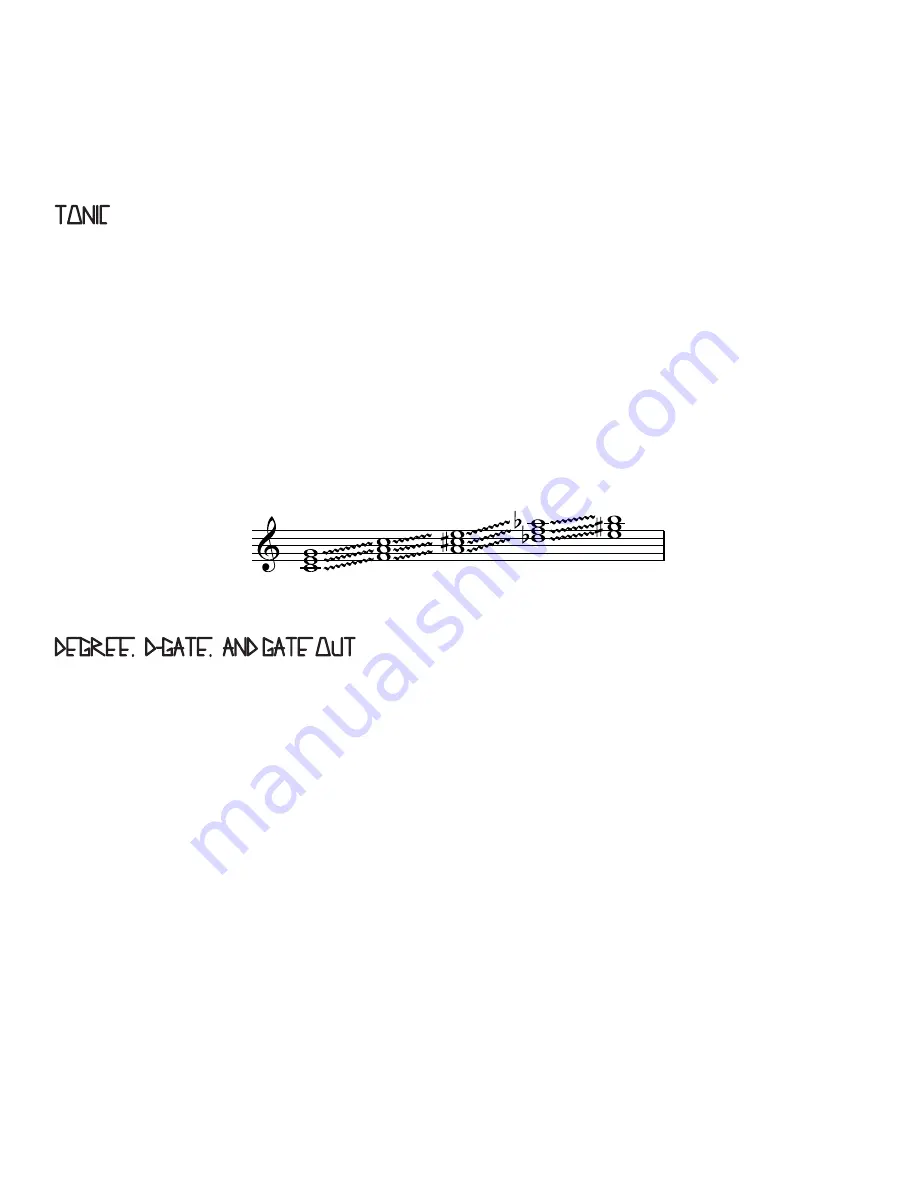
Composing with tELHARMONIC: Voltage-Controlled Music Theory
Recall from the previous section that the left side of the module allows for patch programming chord
progressions, scales, and melodies. It consists of the TONIC, INTERVAL, DEGREE, and D-GATE parameters and
the visual indication of the Color Staff.
TONIC
This parameter is similar to the Pitch control on a VCO, it responds continuously to a 1V/ Octave signal
across 6 octaves. TONIC will control all voices of the tELHARMONIC. This input is of course useful for
patching typical modular sequencing techniques, micro-tunings and modulations but it is also highly useful
for transposing progressions and melodies that are patch programmed using the DEGREE parameter (see
below). To achieve sequences or transpositions that are “in tune” you will either tune these TONIC changes
by ear or utilize a Quantized CV source, such as the QCV output from René.
The Tonic parameter sets the base frequency for the Interval and Degree parameters. In other words, the
Tonic sets the "key". Here is how a portion of the Tonic control looks swept clockwise with Interval set to
Root Triad and Degree set to a Major Triad. Note the Tonic control is continuous, thus the glissando
markings. Also, note that the sonority of the triad (Major in this example) does not change as it moves:
DEGREE, D-GATE, AND GATE OUT
These parameters do not compare to any of the inputs and outputs typically found on a VCO module.
DEGREE is a quantized control that allows for ease in patch programming chord progressions and melodies
using just about any control voltage. It makes note selection relative to the pitch set by TONIC and
determines sonority of the TRIAD where applicable. DEGREE will control all Voices and Algorithms of the
tELHARMONIC and because it is a quantized parameter, any control voltage will result in a valid equal
temperament progression.
When INTERVAL is set to Unison, Fifth, Octave or any of their in-between spaces, DEGREE has twelve
possible values per octave, corresponding to the chromatic scale. When INTERVAL is set to TRIAD or a triad
inversion, DEGREE has seven possible values per octave, corresponding to the degrees of the diatonic scale:
I ii iii IV V vi vii
The pitch of “I”, and therefore the chosen “key,” is set by the TONIC parameter. Depending on the setting of
the DEGREE panel control, diatonic chord progressions can be easily be programmed in any mode
(including the Major and minor scales), with transposition/key change provided by TONIC.
o
Tonic
Содержание Soundhack tELHARMONIC
Страница 1: ...v 2 2...
































